Diary of a Traveling Sadhaka, Vol. 10, No. 7
By Krishna-kripa das
(April 2014, part one)
Mayapur, Mumbai, and Istanbul
(Sent from Dover, England, on April 25, 2014)
Where I Went and What I Did
I was very happy to attain Sri Mayapur Dham again after a week in Kolkata. There I did harinama, the congregational chanting of the holy name, for nearly three hours every day for ten days. One day I also chanted in Krishnanagar with a group of devotees from Mayapur. In Mayapur I celebrated Rama Navami and attended part of Jayapataka Swami’s Vyasa Puja ceremony. I took a train to Mumbai, chanting at Bilaspur, Raipur, and Nagpur along the way. In Mumbai I did harinama one day with Juhu devotees and next day with Mira Road devotees. I also spoke at a program glorifying Aindra Prabhu near Mira Road. On my way back to Dublin, I chanted both with a violinist and by myself in the Istanbul airport.
I share very inspiring quotes from Srila Prabhupada’s books and notes on his lectures. I share excerpts from the journal of Satsvarupa Dasa Goswami. I include notes on lectures by Jayapataka Swami, Bhakti Vidya Purna Swami, Bhakti Purushottama Swami, Bhaktisiddhanta Swami, Murari Krishna Swami, and Janmastami Prabhu.
I want to thank my friend Tara Prabhu for very kindly giving me a liberal donation in Mayapur as well as a couple great lunches featuring vegetables grown in his own garden. I want to thank Gaura Dasa Prabhu from South Africa for kindly letting me stay with him for eleven days in Mayapur and feeding me many healthy and tasty meals. I want to thank Janmastami Prabhu, Jnanagamya Prabhu, Vaikuntha Prabhu, and Dina Bandhu Prabhu for inviting me for meals while in Mayapur.
Thanks to Dina Bandhu Prabhu for the pictures of me on harinama in Mayapur. Thanks to Prema Ras Prabhu for the pictures of me on harinama in Mumbai. Thanks to images.google.com and the original photographers for the pictures of the Mayapur deities. Thanks to Saci Gaurasundara Prabhu for the picture of Gaura Das Prabhu.
Itinerary
April 26: King’s Day, Amsterdam, The Netherlands
April 27–30: The Netherlands
May 1–2: Manchester, England
May 3–5: North UK Retreat
May 6–9: Newcastle
May 10–11: Birmingham 24-hour kirtana
May 12–13: Newcastle
May 14: Sheffield
May 15: Preston
May 16–17: Manchester
May 18: Sheffield Ratha-yatra
rest of May–July (first two-thirds): The North of England, London Ratha-yatra, Stonehenge Solstice Festival
July (last third)–August (first two-thirds): Baltic Summer Festival, Polish Woodstock, Czech Woodstock
August (last third)–September (first half): The North of England, Ireland
September (rest): New York
Reflections on Mayapur
Mayapur, in the Nadia District of West Bengal, is the place where Sri Caitanya Mahaprabhu appeared in this world. Bhagavad-gita reveals its speaker, Sri Krishna, to be the original form of the Supreme Lord, and confidential parts of the Vedic literature tell how He appears again in the role of His own devotee, Sri Caitanya Mahaprabhu, in the beginning of this age of degradation known as Kali, to show how to practice devotional service to the Lord by His own example. He is glorified for giving the highest spiritual perfection krishna-prema, love of Godhead, to people without any spiritual qualifications. Mayapur is similarly merciful. Sleeping in Mayapur is considered as bowing down before the Lord. Eating food grown in Mayapur is described to bless one with love of God. Offenses in Mayapur are not counted against one. Even great saints who gave up everything to reside in Krishna’s land of Vrindavan, end up renouncing Vrindavan to live in Mayapur.
I found it very easy to execute the vow of chanting 16 times around the strings of 108 beads in Mayapur. Even if I made no real endeavor to chant in the morning, if I just chanted as I walked from here to there or while waiting in lines I would easily complete my vow by the end of the day.
In Mayapur I see people I knew when I lived in San Diego, when I lived in Alachua, who I met on the Polish festival tour, who I met in the UK, who I met in other parts of Europe, who I met in other parts of India, and who I met in Mayapur, when I would spent the winter studying there. Some of my friends live there now. I had meals with friends on several occasions.
I stayed with Gaura Dasa Prabhu, from South Africa, who I met and visited in the Manchester area the last two summers and who was very hospitable.
Some Radhanatha Swami disciples involved with the Bhaktivedanta Hospital in Mumbai have created a similar, but small facility in Mayapur, in what used to be called the polyclinic in Gaur Nagar, just before you get to our ISKCON temple.
You can see the Vedic Temple of the Planetarium construction progressing as you walk around our Mayapur property. Leaders are asking everyone to sponsor a square foot of the temple for $150 or 7000 rupees.
It is a little unusual that on Lord Rama’s appearance day in Mayapur, they do not have a big feast for all the devotees. I was invited for lunch that day, so I was not very disturbed. I learned for future reference that at the Prabhupada Puspa Samadhi there is a feast for some senior devotees and at Murari Gupta’s Sita-Rama temple there is a feast at 2:00 p.m. for who ever shows up.
The Mayapur devotees were very inspired to decorate the campus for the arrival of Jayapataka Swami with all kinds of artwork made with chalk and flower petals
Amazingly, even the monkeys congregated above the medical dispensary near the gate, as if preparing to greet Jayapataka Swami.
Later they moved above the main gate.
I love looking at the altar of Radha, Madhava, and their eight female associates. It is the Gaudiya Vaishnava understanding that service to the divine couple, Krishna and His beloved consort Radha, is the highest spiritual ecstasy. Krishna and Radha share the joy of Their transcendental love with those who assist Them in Their pastimes. This is depicted on the altar where the eight girlfriends of Radha-Madhava all appear very joyfully engaged in the service of the divine couple. This time I finally memorized all eight of their names. On Krishna’s side of the altar, from left to right, are Tungavidya, Citra, Campakalata, and Lalita, and on Radha’s side of the altar, from left to right, are Visakha, Indulekha, Rangadevi and Sudevi.
Chanting the evening arati prayers in front of the Panca-tattva, Lord Caitanya and His four associates, is also an unforgettable experience – so many people chanting and dancing in front of the personality who inaugurated this practice of chanting and dancing and who we hope to please by that activity.
I look forward to my next visit to Mayapur, planned for February 2016.
Harinamas in Mayapur
Kusha Prabhu, from Africa, playing drum, is in charge of the Mayapur Harinama Party, while Gitanagari Prabhu, playing the harmonium, is there every day to sing and arrange for others to sing.
After leaving Kolkata, I arrived in Mayapur at 3:00 p.m., just in time for harinama, which was from 3:00 to 5:30 p.m. Later they shifted from to 4:00 p.m. to 6:30 p.m., desiring to avoid some of the heat of the sun, but that proved to be too late, and so they settled on 3:30 to 6:00 p.m.
I was leading the singing near Hulor Ghat, when my friend Dina Bandhu Prabhu from Gainesville, along with Darlina, his wife, came by, returning from shopping in Navadvipa with Tulasirani dd. I was given 45 minutes to sing, but I gave half my time to him to encourage him since I know he plays some lively tunes on the harmonium. The brahmacari drummer from Malayasia liked Dina Bandhu’s singing so much, he encouraged him to sing for the rest of the harinama.
Darlina did a great job of singing the response as Dina Bandhu led. Dina Bandhu fell in love with doing harinama in Mayapur in procession with the Gaura-Nitai deities on our cart and came out every day for the rest of his stay, arriving punctually by 3:00 p.m. each day. I am always encouraging people to go on harinama, at the expense of having to endure the pain of hearing their excuses, so it was a great joy to see Dina Bandhu Prabhu’s spontaneous enthusiasm, which judging from his timeliness, may exceed my own.
Some girls in the playground moved to the music of our chanting party.
The next day we went to the Sita Rama temple at the home of Murari Gupta, the incarnation of Hanuman in Lord Caitanya’s pastimes. We sang for the deities there for a little over an hour.
One the way back, Svarupa Damodar Prabhu, from Ukraine, who I have seen in previous years on Mayapur Harinama Party, led the singing with great delight. He stayed a few more weeks before returning to Ukraine.

The day after that we went to the Jagannatha temple across the Jalangi River from Hulor Ghat. I had to leave early as I promised some devotees I would go on harinama with them in Krishnanagar.
One devotee there was doing a program at his house and wanted to precede it with a harinama around that area of Krishnanagar.
Deities accompanied us on the procession.
The ladies danced.
Mangalavati Citra dd was especially enthusiastic.
The guys danced.
A bunch of Western devotees from Mayapur came, many from Brazil, some from Russia, Czech Republic, Croatia, and a few other places. It took so much time waiting to go and getting there that we were only able to do harinama for an hour and fifteen minutes or so.
Still it was good to go, and many people received the party nicely, like the smiling and clapping motorcycle rider above. We also did kirtana at the home of our host, and honored prasadam there as well.
On Saturdays and Sundays and near the time of Jayapataka Swami’s Vyasa Puja we chanted around our Mayapur campus because it was so crowded there. Often the people are milling around in an unfocused way, and harinama increases their devotional concentration.
Sometimes the people are willing to sing and dance.
The devotee ladies often danced with the pilgrims.
Sometimes we go and chant down by the goshala, the cow barn. They have very nice lassi there for just 20 rupees which is very refreshing, and a tasty way of supporting the cow program.
Sometimes we chanted where the devotees were distributing free prasadam, spiritual food.
After the feast for Jayapataka Swami’s Vyasa Puja, a mother and daughter from Bangalore joined our harinama party. Our amplifier was so loud it woke them up, and they saw our party from the window of their room, and they came down to join us, staying the rest of the afternoon. They considered this harinama was just the ideal activity to be doing during their vacation in Mayapur and were so happy to be a part of it. A shorter girl from Jaipur also joined us the same day, also happy to be on the party. [In Jaipur chanting parties in the streets are not unusual, and once on harinama there I encountered another harinama party.]

The three ladies all sang the response, often into the microphone. They all fell in love with the Mayapur Harinama Party and came every day for the rest of their stay. On my last day, I explained to the mother that every two years, I come to join the party for two months, all the way from America, and that in the same way, she could make it a point to come regularly to Mayapur and do harinama,perhaps a week every year. She liked the idea but said, like a typical Indian wife, that it depended on if her husband let her.
In the evening at our Mayapur campus they had a four-day program under the title “Tribal Care”. Apparently one concern is that people in rural Bengal are becoming converted to Christianity by being given free rice. They asked different devotees to speak. When I spoke I told the story of how a zealous Indian Christian was really pressuring me to accept a Bible on a train in South India. I was trying to think of a way to respond to him, and it occurred to me to say, “I come from America which is a predominantly Christian country and the Christians had twenty years of my life to convince me to give up sinful acts and take shelter of God, but they failed. The Hare Krishnas, however, were successful, so I am going to stick with them.” After telling that story, I glorified the Hare Krishna mantra and how it gives you a higher spiritual experience and gives you the strength to give up self-destructive activities. Some devotees liked what I said. Before the speaking, both the locals and the Westerners chanted. One day Tulasirani dd, who I know from Florida, got to sing once but only for five or ten minutes. She sang a tune which she sang in December at the University of North Florida green and did a good job with it. I got to sing on the stage each day I was there, but never to lead. I felt I got to sing on harinama for forty-five minutes or an hour every day, so I did not really mind. The day when the organizer planned to ask me to lead, I did not come since the Krishnanagar program she also organized went so late it messed up my schedule, and I was not eager to add another event to my life. I am happy just going on the regular Mayapur Harinama Party, keeping up on my reading and blog, and catching up on my promises to devotees.
Chanting on the Train to Mumbai
As usual, I downloaded the list of the stops with their duration for the Jnaneswari Express I took to Mumbai so I could chant on the platform at the longer stops. We arrived at Bilaspur about ten minutes early, a surprise, especially considering we left Howrah eight minutes late. Thus we stayed there at least twenty-five minutes instead of the scheduled fifteen. I sang a three-part Hare Krishna tune on the platform with my harmonium, which sounds a lot better because of the two repairs I had done on it by Master Pankaj in Mayapur. A group of varying size listened.

One man (on the right in front) sang along. I decided to reciprocate with him by giving him a book about Krishna as a gift, but he passed in to some young uniformed men (left), who had been cleaning the train while it was stopped. After their cleaning, they had listened to me sing, and took some video of it. They were happy to get the book. I had them take a photo of my last business card, so they would have my email address to send me the video. You never know if the people will, but the last one who took a picture did.
As I got on the train, someone in my compartment continued singing Hare Krishna to the same tune, and I offered him a book. I asked him, “Hindi or Bangla?” He said, “Bangla,” and I gave him my last Bengali book.
I saw him reading it on two occasions, once aloud to himself as he lay in his side upper berth. I chanted again at Raipur. When I chant and feel awkward about it, I think of how Lord Caitanya predicted and desired that the holy name of Krishna be chanted in every town and village, and my attempt must be pleasing to Him. It is also glorification of the foresight and potency of Caitanya Mahaprabhu that a Westerner is even singing the holy names at all. And it is a reminder that the chanting of the holy name is the dharma of this age, as I told the people at Bilaspura just before my train left.
Just before reaching Nagpur, I met Rohit, a young Indian salesman who works in the area of software. Because he worked sometime in San Francisco, he spoke English beautifully. He was originally from Uttarakhand, literally “the north country” of India, near Haridwar, and appreciated that area where the Ganges flows as a spiritual place. He told me of another place in the north called Nanital, which has many temples which give you a profound spiritual feeling. He was from Pune, and I showed him the recent Back to Godhead with the article on our new temple there, and I promised to send him a copy. He was leaving the train at Nagpur, and I told him I was going to sing for the ten minutes we were scheduled to stop there and I invited him to listen. His train was not for two hours so he agreed. He listened for most of the time, and advised me to learn Hindi to explain to people what I was doing, so they would appreciate it more.
My friend Prema Ras Prabhu who started the Friday night program in Gainesville, especially for his friends, Indian IT and engineering students, ended up moving back to Mumbai after graduating and working briefly in America. He kindly asked his harinama friends to arrange some extra harinamas for me in Mumbai. When I arrived in Mumbai, just as when I arrived in Delhi, I got to do some extra harinama as I ended up at a different exit from the train station than the devotee who came to get me anticipated. I always assume the exit near platform one is the best place to meet people, but in India that is not always true. Thus I chanted outside Dadar for 40 minutes, surrounded by leaf sellers, garland sellers, and taxis. The leaf sellers provided a table for my harmonium and seat to sit on. One also let me use his phone, as I had no credit on mine.
Later as the afternoon ended, we chanted twenty minutes in a motor rickshaw to a garden ISKCON Juhu owns by the beach.
We chanted briefly at the entrance to the garden.
Inside the garden we chanted for over an hour.
We had 36 people listening to us in the garden at one point! Five chanted and about ten clapped. Later some young kids chanted and danced with us.
Prema Ras Prabhu proved himself expert at inspiring the kids.
We had five devotees for the end of harinama.
Then after returning to ISKCON Juhu, we chanted near the prasadam distribution and book distribution booths.
There Adbhuta Hari Prabhu, from Croatia, who used to act as personal service of his guru, Sridhara Swami, joined us, sometimes playing mrdanga and sometimes singing and playing the harmonium.
Some people happily danced.
Thus I completed my quota of three hours of public chanting of the Hare Krishna maha-mantra at four different venues in Mumbai, (1) outside the Dadar train station, (2) on the rickshaws to and from the ISKCON garden, (3) at the ISKCON garden, and (4) outside the Juhu temple to the many pilgrims. I felt happy to connect with Prema Ras Prabhu, who I remember from his enthusiasm on our late night Friday harinamas in Gainesville, and thankful to Abhinav Prabhu, who organized harinamas and participated in them in Mumbai.
The second day was not as successful as the first, perhaps because of the absence of Prema Ras. Abhinav thought it would be easier to get the devotees in ISKCON Mira Road to participate, so we caught a ride over there in the milk truck that delivers milk from the devotee farm to both Juhu and Mira Road. That meant missing the second half of the morning program. We planned to do harinama from 5:00 to 7:00 p.m., before a home program glorifying Aindra Prabhu, whose appearance day was recently, but it was not such a good plan to start at 5:00 p.m. because that is when lunch prasadam is served, and thus we changed it to 5:30 p.m. I was a little late from a dentist appointment at Bhaktivedanta Hospital, and Abhinav was even later, coming from working in another part of Mumbai. I took lunch at the hospital to save time, but Abhinav had not had lunch, so it was 6:30 p.m. before we were ready, and then we had to round up some more people. We started around 6:45 p.m. and had five or six people. We started from the temple ashram, to the temple itself, and then to the nearby apartment where the home program was to happen.
There we stopped at another devotee apartment on the way. We had someone playing thewhompers and someone dancing, and that was an increase over the previous day. I was amazed we could chant so vigorously outside, and even inside, the apartment building where our evening home program was to be without anyone complaining.
I was to speak to glorify Aindra Prabhu, who is famous for establishing the 24-hour kirtana program in Vrindavan and for having a lot of devotion for Krishna. I like to read something from Srila Prabhupada’s books, and decided to read the symptoms of bhava, ecstatic love of God, from The Nectar of Devotion, as many of them were prominent in the character of Aindra Prabhu. When the devotee returned from the temple with an English copy of The Nectar of Devotion to speak from, I opened it and was surprised and delighted to find that although the book has 51 chapters, it opened to the chapter called “The Character of One in Ecstatic Love”! I decided to talk about the last four of the nine qualities bhava which were described on the very page the book opened to, and to tell how Aindra Prabhu manifested them:
(6) He is always very eager to serve the Lord faithfully. (7) He is very much attached to the chanting of the holy names of the Lord. (8) He is always eager to describe the transcendental qualities of the Lord. (9) He is very pleased to live in a place where the Lord’s pastimes are performed, e.g., Mathura, Vrindavana or Dvaraka. I told my usual stories of Aindra Prabhu (see http://krishnamonk.blogspot.no/2010/07/aindra-prabhu-words-of-appreciation.html), and other people told some as well. We sang some of his popular tunes. People were satisfied with the program. My only lamentation is that it went so long I only slept four hours before my over ten hours of flights to Ireland!
Devotional Experiences from Mumbai to Dublin
As I went through airport security in Mumbai, the Indian man who scanned me asked if I had visited Gujarat. I said no and explained I went to Mayapur, a sacred place of the Hare Krishnas in West Bengal. Later as I gathered up my X-rayed belongings, I asked the man if he was from Gujarat himself, and he said no and asked if I had heard of Haridwar and Rishikesh. I smiled thinking of my pleasant visits to Rishikesh the last two times to India, and told him I had been there and how the Ganges flowing through the mountainous region was so beautiful and how Rishikesh was a sacred place and he was fortunate to have come from there. He asked if I liked the Hindu religion. That is a tricky question to answer for me because there are all kinds of issues involved, so I groped for something simple and truthful to say. “Krishna is a very loving God,” I said with a smile. He replied, also smiling, “Yes, Krishna is a loving God.” Seeing the beat up condition of my harmonium as it emerged from the X-ray machine, a security lady asked if it was broken. I took the opportunity to play a couple of mantras on it to show her it was in fact in working condition. She was pleased, although some of the others guards were a little apprehensive to have me playing it at security.
I placed my harmonium in an empty overhead bin on my Turkish Airlines flight, but mid flight I noticed someone had placed a violin next to it. When we arrived in Istanbul, I opened the bin, and the girl in back of me recognized my instrument as a harmonium. She said likes to jam with her violin and has been getting into more spiritual music recently, even playing violin at bhajans. She expressed it would be wonderful if it were possible to play together at the airport before her next flight. I told her how my friend had played his one-headed drum and chanted in Istanbul on his way to India, so it was a realistic possibility. When we went through security in Istanbul, the lady checking the bags wondered about my harmonium, having never seen one, so I got to play and sing a mantra at security for her, while the violinist waited. The violinist was named Lisa, and she lived in Leipzig. She started playing violin at age 7. She also did meditation and kriya-yoga. She had attended the Ancient Trance festival near Leipzig which I had gone to last year for the first time. I explained that the Hare Krishnas did music and catered vegetarian food there. She had been to a Hare Krishna Diwali festival in Leipzig and remembered how wonderful Krishna food is. I told her how for several years we have had Kirtan Mela, with six days of chanting twelve hours a day, both times in a area near Leipzig. Her flight was an hour before mine so we found her gate and walked most of the way there. It was the time for boarding to begin, but she was adventurous enough to sit down along the airport corridor and get out her violin.

With the scarf around her neck, she removed the dust from her violin’s adventures in India and tuned it up to the “A” key on my harmonium. I played harmonium and sang for ten or fifteen minutes, and she accompanied me on her violin. A few people took pictures.
You could see she was really good with her violin, both in replicating the original tune and in improvising upon it. After we finished she commented on how the chanting had reduced the anxiety of traveling. I thanked her, saying playing music with her was the best part of my day so far, and I gave her my last business card, saying I had videos of the German Kirtan Mela on my blog, and perhaps we could meet and play again in Germany in the summer.
After finding my own gate, which turned out to be the same as hers, I returned to that spot we had chanted before, undisturbed by the authorities, and thinking it a safe place, played and sang by myself for another 45 or 50 minutes. Some more people took pictures, smiled, and gave the old thumbs up. Even the airport employees appreciated. There was no negatively.
To see pictures I took but did not include in this journal, please click on the link below, or copy it to your web browser:
Notes on Vyasa Puja Homages for Jayapataka Swami
Bhakti Caru Swami from a letter:
You went to remote Bengal to reach people. You started nama-hatta programs now acclaimed throughout the world. You started Bhakti Vriksa. You are one of the most compassionate leaders in ISKCON, willing to find those who left and bring them back.
Radha Jivan Prabhu:
The saints are more merciful than Hari as they make His teachings nectarean and accessible.
Srila Prabhupada mentioned to the father of Sri Nathaji in Mumbai, who had done a lot of service for him, “Do you see this disciple Jayapataka? I want you to adopt him so he can remain in India. He is a direct associate of Sri Caitanya Mahaprabhu.”
Developing Mayapur is his greatest service.
Once Srila Prabhupada said, “Every acaryadid something to develop Mayapur. Bhaktivinoda Thakura found Lord Caitanya’s birthplace and built a temple there. Bhaktisiddhanta Sarasvati Thakura made the largest of his 63 temples in Mayapur. I want to thank you all for helping me establishing a temple in Mayapur.” As he said that, he was overcome with heartfelt emotions and could longer speak.
[Radha Jivan offered Jaypataka Swami a gigantic Gita, a gift of Ambarisa Prabhu. He urged Jayapakata Swami to encourage his followers to support the Temple of the Vedic Planetarium on this Vyasa Puja Day, and Jayapakata Swami did.]
Rajendrananda Prabhu:
Jayapataka Swami had to have a stroke for some people to realize his glories.
He is a desire tree, praying for anyone’s advancement who comes to him.
Bhismadeva said, “Eternal time is irreversible otherwise how could there be reverses in the presence of King Yudhisthira, the son of the demigod controlling religion; Bhima, the great fighter with a club; the great bowman Arjuna with his mighty weapon Gandiva; and above all, the Lord, the direct well-wisher of the Pandavas?”
Jayapataka Swami’s stroke was to reveal that his devotional service is truly unmotivated and uninterrupted.
His only wish is we just tell everybody about the maha-mantra.
A Srila Prabhupada disciple who has helped in Mayapur since the 1970s:
Jayapataka Swami is always dynamic, unparalleled and original.
Though traveling around the world, he never stopped looking at Mayapur.
I was an early Mayapur treasurer, and I was the only one who could get him to sign a check. I would just barge in. He would change the topic a few times but then sign it. Recently when I asked when I could meet him, he said, “Just barge in like you used to do.”
Insights
Srila Prabhupada:
from Srimad-Bhagavatam 7.9.10, purport:
“Prahlada Maharaja says that one who has been born in a brahmanafamily but is falsely proud of his prestigious position cannot even purify himself, not to speak of his family, whereas if a candala,a lowborn person, is a devotee and has fully surrendered unto the lotus feet of the Lord, he can purify his entire family. We have had actual experience of how Americans and Europeans, because of their full Krishna consciousness, have purified their whole families, so much so that a mother of a devotee, at the time of her death, inquired about Krishna with her last breath. Therefore it is theoretically true and has been practically proven that a devotee can give the best service to his family, his community, his society and his nation. The foolish accuse a devotee of following the principle of escapism, but actually the fact is that a devotee is the right person to elevate his family. A devotee engages everything in the service of the Lord, and therefore he is always exalted.”
from Srimad-Bhagavatam 7.9.11, purport:
“By glorifying the Lord constantly, the living entity becomes purified in the core of his heart, and thus he can understand that he does not belong to the material world but is a spirit soul whose actual activity is to advance in Krishna consciousness so that he may become free from the material clutches. . . . In conclusion, the more we engage in Krishna consciousness and render service unto the Lord, the more we benefit. Krishna does not need service from any of us.”
from Srimad-Bhagavatam 7.9.12, purport:
“It is clearly understood that a devotee does not need to be born in a very high family, to be rich, to be aristocratic or to be very beautiful. None of these qualifications will engage one in devotional service. With devotion one should feel, ‘God is great, and I am very small. Therefore my duty is to offer my prayers to the Lord.’ Only on this basis can one understand and render service to the Lord.”
from Srimad-Bhagavatam 7.9.17, purport:
“The entire world is under the illusion that people will be happy by advancing in materialistic measures to counteract the miseries of conditional life, but this attempt will never be successful. Humanity must be trained to engage in the transcendental loving service of the Lord. That is the purpose of the Krishna consciousness movement. There can be no happiness in changing one’s material conditions, for everywhere there is trouble and misery.”
from Srimad-Bhagavatam 7.9.18, purport:
“Attempts to mitigate the miseries of material existence by material methods will never be successful. One must take to Krishna consciousness to become really happy; otherwise happiness is impossible. One might say that becoming advanced in spiritual life also involves tapasya,voluntary acceptance of some inconvenience. However, such inconvenience is not as dangerous as material attempts to mitigate all miseries.”
from Srimad-Bhagavatam 7.9.22, purport:
“A criminal is put in prison and punished by the government, but the same government, if it likes, can release the criminal from imprisoned life. Similarly, we must know conclusively that our material condition of suffering has been allotted to us by the Supreme Personality of Godhead, and if we want to be saved from this suffering, we must appeal to the same controller. Thus one can be saved from this material condition.”
from Srimad-Bhagavatam 7.9.25, purport:
“Our desires cannot be satisfied by illusory thoughts and plans; rather, we have to follow the instructions of Lord Krishna: sarva-dharman parityajya mam ekam saranam vraja[Bg. 18.66]. Then we shall be happy. Otherwise, in the name of happiness, we shall continue to suffer miserable conditions.”
from Srimad-Bhagavatam 9.11.16, purport:
“Aspiring to possess more and more for personal sense gratification is simply ignorance, and this ignorance is conspicuous by its absence from the heart of a brahmanaor Vaishnava.”
from a class on Srimad-Bhagavatam 1.2.18 given on September 26, 1974 in Calcutta:
By worshiping Krishna, all perfection will be achieved. That is sraddha [faith].
If a woman says any man is OK that is not very good. She should think only my husband is good. That is chastity. Similarly we must be chaste in our relationship with Krishna.
We must associate with sadhus (saints) with unflinching faith in Krishna.
Where is this bhagavata-saptaha[seven-day recitation of Srimad-Bhagavatam by professional men] described? I have not seen it in any scripture. . . . Rather it said nityam-bhagavata-sevaya [daily hear the Srimad-Bhagavatam].
from The Nectar of Devotion, Chapter 24:
“Any person who is reliable in all circumstances is called dependable. In this connection Rupa Gosvami says that even the demons were relying upon the dependabi

Sunday Love Feast
|
 |
When?
|
|
Sunday, April 27th
Program starts at 11 am |
|
|
|
6 George Street South
Brampton, Ontario
L6Y 1P3, Canada
Park underground(free) @ City Hall
Phone:416-648-3312 |
|
 |
New! Listen
|
|
| Click here to listen to previous class recordings on our blog |
|
|
|
|
|
Srimad-Bhagavatam 3.5.13
sā śraddadhānasya vivardhamānā
viraktim anyatra karoti puṁsaḥ
hareḥ padānusmṛti-nirvṛtasya
samasta-duḥkhāpyayam āśu dhatte
TRANSLATION
For one who is anxious to engage constantly in hearing such topics, kṛṣṇa-kathā gradually increases his indifference towards all other things. Such constant remembrance of the lotus feet of Lord Kṛṣṇa by the devotee who has achieved transcendental bliss vanquishes all his miseries without delay.
Program Schedule
11.00- 11.15 Tulsi Puja 11.15 – 11.30 Guru Puja 11:30 –11:55 Aarti & Kirtan 11.55 – 12.00 Sri Nrsingadeva Prayers 12.00 – 1:00 Vedic Discourse 1:00 – 1:30 Closing Kirtan
COMING UP AHEAD
 ISKCON Brampton Monthly SankirtanThis Sat @ 12.00pm-2.00pmWe encourage everyone to come out and participate and make Srila Prabhupada happy as this service is highly recommended by His Divine Grace. ISKCON Brampton Monthly SankirtanThis Sat @ 12.00pm-2.00pmWe encourage everyone to come out and participate and make Srila Prabhupada happy as this service is highly recommended by His Divine Grace.Please be @ the temple before 12.00pm to leave out with the Sankirtan Team
For more details please call @ ISKCON Brampton # 416.648.3312.
“In this age, chanting of Hare Krishna Mantra is the prime business of the devotee, and preaching of this Hare Krishna Mantra by outdoor Sankirtana and propagation of literature is our more important business. Side by side, Deity worship is recommended, but when there is a question of accepting one of them, we shall prefer to accept chanting of Hare Krishna Mantra first.”
Srila Prabhupada(Letter to Hamsaduta – Hamburg 5 September, 1969.)
Mohini Ekadasi  Fasting………………… on May 10th Fasting………………… on May 10th
Breakfasti……………. on May 11th b/w 5.56am-10.48amEvery fortnight, we observe Ekadasi, a day of prayer and meditation. On this day we fast (or simplify our meals and abstain from grains and beans), and spend extra time reading the scriptures and chanting the auspicious Hare Krishna mantra.
 Appearance of Lord Nrsimhadeva Appearance of Lord Nrsimhadeva
on May 13th….celebration @ 7.00pm
If you’d like to help with this event,please ask Prema Gaurangi Devi Dasi how.
 Sponsor Kalash Sponsor Kalash
If you’d like to participate in the Maha Abhiseka Ceremoney of Lord Nrsimhadeva,you may sign up for Kalash[108 $]for a family.
Note:we’ve limited no of Kalash,so first come first serve.
To sponsor/finance this event,please contact Krsna Smaran Devi Dasi @ the temple or via kavitabalram@yahoo.com.
ON GOING EVERY SUNDAY
 Nutrition Help & Diet Tips Nutrition Help & Diet Tips
Mother Rashmi Ahuja is offering free one to one consultations and development of Individualized Nutrition Plans on Sundays between 1:30 – 3pm. Please contact (416)569-6373 or (905)488-7272 to book an appointment.
 Sunday School Sunday School
The Sunday School provides fun filled strategies through the medium of music, drama, debates, quizzes and games that present Vedic Culture to children. However the syllabus is also designed to simultaneously teach them to always remember Krishna and never forget Him.
The Sunday School follows the curriculum provided by the Bhaktivedanta College of Education and Culture (BCEC).
Please note that ISKCON Brampton is a nut free environment in order to support those with allergies. Your cooperation is appreciated.
Hare Krishna Hare Krishna Krishna Krishna Hare Hare
Hare Rama Hare Rama Rama Rama Hare Hare
Chant and Be happy!
|
|
 Photos from Jagannath Ratha Yatra 1st Time ever in Dhulikhel & Banepa. Stage Program at Dhulikhel on 23rd April and Jagannath RathaYatra at Banepa, Kavre, Nepal on 24th April 2014.. With His Holiness Mahavishnu Swami, HG Patri Prabhu, and 1500+ Devotees for the Festival of Chariot. Read more ›
Photos from Jagannath Ratha Yatra 1st Time ever in Dhulikhel & Banepa. Stage Program at Dhulikhel on 23rd April and Jagannath RathaYatra at Banepa, Kavre, Nepal on 24th April 2014.. With His Holiness Mahavishnu Swami, HG Patri Prabhu, and 1500+ Devotees for the Festival of Chariot. Read more ›
 Dallas Morning News,
Dallas Morning News,
Each week we will post a question to a panel of about two dozen clergy, laity and theologians, all of whom are based in Texas or are from Texas. They will chime in with their responses to the question of the week. And you, readers, will be able to respond to their answers through the comment box.
The Lenten season is closing now in Holy Week. It comes around each year to remind Christians of Christ’s suffering and the suffering that we all endure in life. But, of course, the question of suffering extends to all faiths and is experienced by people regardless of religion.
David Brooks wrote recently in the New York Times that, in a culture chasing happiness, it is suffering, and suffering well, that truly defines us.
We suffer, and people suffer around us, in so many different ways. Some of it is widespread, the suffering of whole societies under war. Some of it is deeply personal, the death of a loved one or a divorce or a financial collapse. Whatever the circumstance, suffering can be profound.
How can faith sustain us through suffering and how should suffering inform our faith? Is suffering essential to being whole as a human? And what does it mean to accept suffering rather than reject it?
NITYANANDA CHANDRA DAS, minister of ISKCON (International Society for Krishna Consciousness), Dallas
Suffering comes about as a karmic reaction for past deeds to encourage the self to not act against the laws of nature. Because a saintly person realizes that he is not the body, he does not identify with sufferings related to his body and mind.

A simple example is man who works hard and is very attached to his car, when the car gets damaged he practically feels pain. Another man, perhaps extravagantly wealthy, in the same circumstances does not feel the same pain as the man with great attachments to his car.
Therefore, those who are spiritually rich with practical realization of the self beyond the body do not suffer like those who are in the bodily conception of life.
To see all responses of the TEXAS Faith panel click here.

Human life is distinguished from animal life due to its heavy responsibilities. Those who are cognizant of these responsibilities and who work in that spirit are called suras (godly persons), and those who are neglectful of these responsibilities or who have no information of them are called asuras (demons). – Srila Prabhupada, Sri Isopanishad Mantra […]
Have you visited WpRecipes today?
From K Jayadeva Das: Between the first release of the MacMillan edition and the year 1977 in which Srila Prabhupada disappeared there would have been many reprint of Bhagavad Gita As it is, why these changes were not incorporated at those times? Where is the documentary evidence that Srila Prabhupada wanted those changes made to […]
Have you visited WpRecipes today?
 HH Giriraj Swami’s wonderful answer! Lord Krishna and His energies exist eternally, simultaneoulsy, but because Krishna is primary and His energies are subordinate, we say that they come from Him. For example, we say that the sunshine comes from the sun, because the sunshine is secondary to the sun, but as long as the sun has existed, the sunshine has also existed. Read more ›
HH Giriraj Swami’s wonderful answer! Lord Krishna and His energies exist eternally, simultaneoulsy, but because Krishna is primary and His energies are subordinate, we say that they come from Him. For example, we say that the sunshine comes from the sun, because the sunshine is secondary to the sun, but as long as the sun has existed, the sunshine has also existed. Read more ›
Please find below recordings of Kadamba Kanana Swami’s participation in the 26th annual Ratha Yatra festival in Durban. You may listen online via the media player or download by right-clicking on a title and save target as. KKS_DBN_RY_18April2014_Bhajan_The_glories_of_the_holy_name KKS_DBN_RY_18April2014_Lecture_The_glories_of_the_holy_name KKS_DBN_RY_19April2014_Kirtan_Soul_beat_dancing_feet KKS_DBN_RY_19April2014_Lecture_Imperfect_senses_imperfect_knowledge KKS_DBN_RY_19April2014_Lecture_Our_constitutional_position KKS_DBN_RY_20April2014_Lecture_Initiation KKS_DBN_RY_20April2014_Lecture_Main_stage KKS_DBN_RY_20April2014_Lecture_The_real_meaning_of_charity KKS_DBN_RY_21April2014_Lecture_Karma_and_reincarnation
Easter is a time of family gatherings and feasting for those of the Christian faith. However in Durban, Easter also represents a time of celebration for Hare Krsna devotees as it is time for the annual Ratha Yatra festival. The four day festival took place from 18-21 April and is widely considered to be the […]
 One of the kids was asking if the lady close to Krishna is His girlfriend! Read more ›
One of the kids was asking if the lady close to Krishna is His girlfriend! Read more ›
From Sushant Kulkarni Answer Podcast
Have you visited WpRecipes today?
From Sushant Kulkarni Answer Podcast
Have you visited WpRecipes today?
From Sushant Kulkarni Answer Podcast
Have you visited WpRecipes today?
From Sushant Kulkarni Did Srila Prabhupada want to re-write the Bhagavad-gita As It Is and put fresh commentaries in it? I am asking this because someone told me that Srila Prabhupada worked very fast on the gita as he just wanted to print it out as early as possible. Answer Podcast
Have you visited WpRecipes today?
From Sushant Kulkarni Answer Podcast
Have you visited WpRecipes today?
From Sushant Kulkarni Answer Podcast
Have you visited WpRecipes today?
From Sushant Kulkarni Answer Podcast
Have you visited WpRecipes today?
From Sushant Kulkarni Answer Podcast
Have you visited WpRecipes today?
1966 April 25 :
“Sasthi. I went to see Mr. Bogart. Came back & settled to postpone return back to India.”
Prabhupada Letters :: 1966
1969 April 25 : “In Buffalo, we had three meetings, and it was found that the students, both boys and girls, especially the girls, they were very much receptive and encouraging. Please organize the Sankirtana Party very nicely, and try to preach among…
1970 April 25 : “Yes, the conditioned souls are parts and parcels of the Lord and thus they were with Krsna before being conditioned. Just as the child must have seen his father because the father places the child in the womb of the mother, similarly …
From Sushant Kulkarni Answer Podcast
Have you visited WpRecipes today?
From Sushant Kulkarni “Those who are in complete Krsna Consciousness are not ultimately responsible for their actions.” (Purport of verse 14, chapter 18 of Bhagavad-gita As It Is) You have stated in a previous QA podcast (What is the meaning of ’cause’ in the verse 2.47), that we are responsible for our actions. You gave […]
Have you visited WpRecipes today?
From Sushant Kulkarni Answer Podcast
Have you visited WpRecipes today?
The post Conversation with Ramananda Prabhu and Jahnava-priya dd (Part 2) appeared first on SivaramaSwami.com.
From Sushant Kulkarni Can the ‘adhisthanam’ in gita verse 18.14 refer to some place of action other than the body? For example, the place of action for a businessman is the market place, for student it is college or university. Answer Podcast
Have you visited WpRecipes today?
From Sushant Kulkarni Krishna says in the Gita: “Never consider yourself to be the cause of the results of your activities.” (2.47) If we are not the cause of the fruit of our work then what is the cause of the fruit of our work? Is it only the material nature as mentioned in the […]
Have you visited WpRecipes today?
From Sushant Kulkarni Krishna says in the Gita (3.4) “Not by merely abstaining from work can one achieve freedom from reaction, nor by renunciation alone can one achieve perfection.” In the Srimad-Bhagavatam (1.5.17) we have- tyaktva sva dharmam caranam bujam harer… So how to understand these seemingly contradictory instructions? Answer Podcast
Have you visited WpRecipes today?
Sri Radha’s charming teen-age maidservants in Vrindavana have braids that swing to and fro, beautiful broad hips, slender waists, splendid necklaces decorating the flower buds of their beautiful breasts, various splendid ornaments and garments, glistening golden complexions the color of saffron, and youthful beauty that is as sweet as nectar. Please meditate on Sri Radha’s […]
1972 April 25 : “There were four listeners when Krishna instructed Arjuna, so there are four bona fide Visnu sampradayas. Besides the Visnu sampradayas, there are other sampradayas, but they are following the directions given under off-shoot authoriti…
1972 April 25 : “Yes, you do not know how to serve Krishna, so you simply assist your Guru – we must always think like this. In this way we can offer one plate and many plates are distributed.”Prabhupada Letters :: 1972
1972 April 25 : “I have included one photograph of our proposed skyscraper in Los Angeles and so I want that our skyscraper in Juhu should also be looking like this. I do not like the round towers you have proposed, it is too fanciful.”Prabhupada Lett…
1973 April 25 : “These principles of Krishna consciousness, if strictly followed, will keep you always in a purified condition and will give you spiritual strength to defeat maya, and when this body is finished, no more material bodies, but back to ho…
1974 April 25: “The construction fund should only be used for construction items. Because you need these checks urgently I am sending, but please send a letter giving a proper account.”Prabhupada Letters :: 1974
 Chanting and dancing! Read more ›
Chanting and dancing! Read more ›



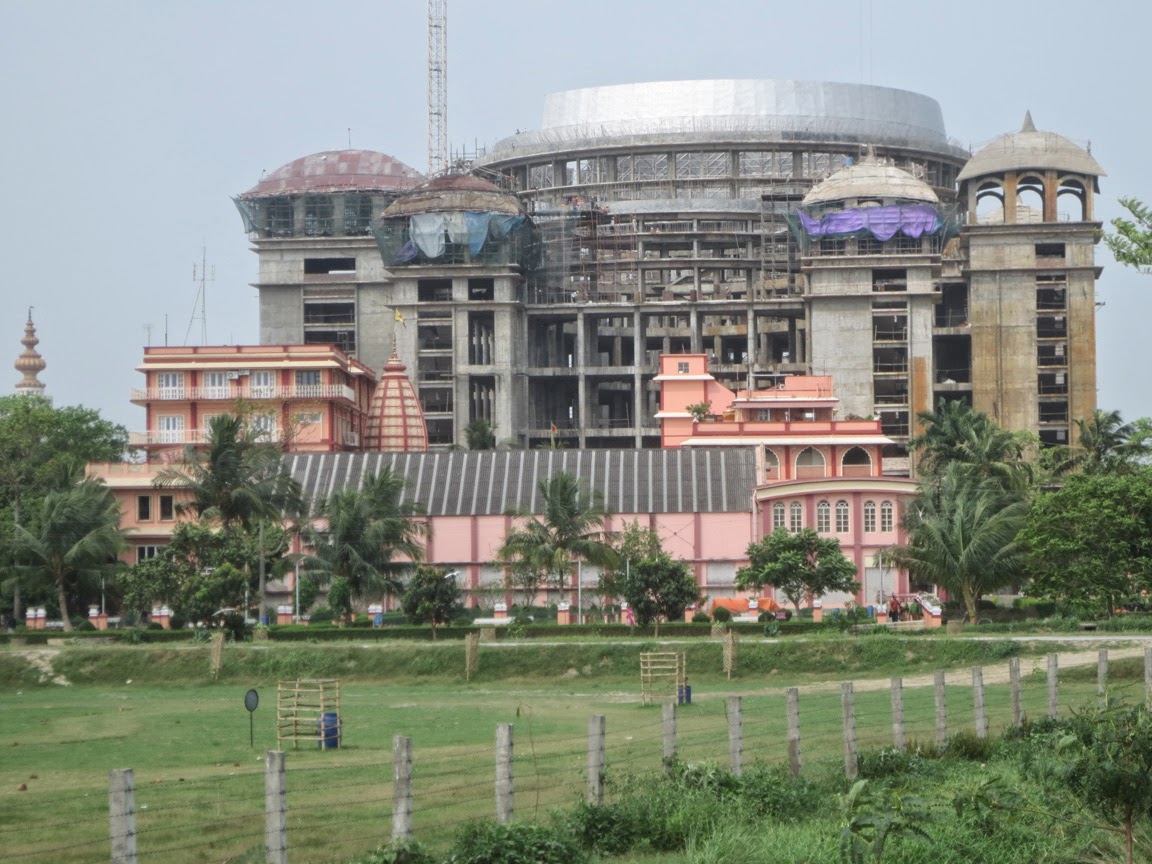


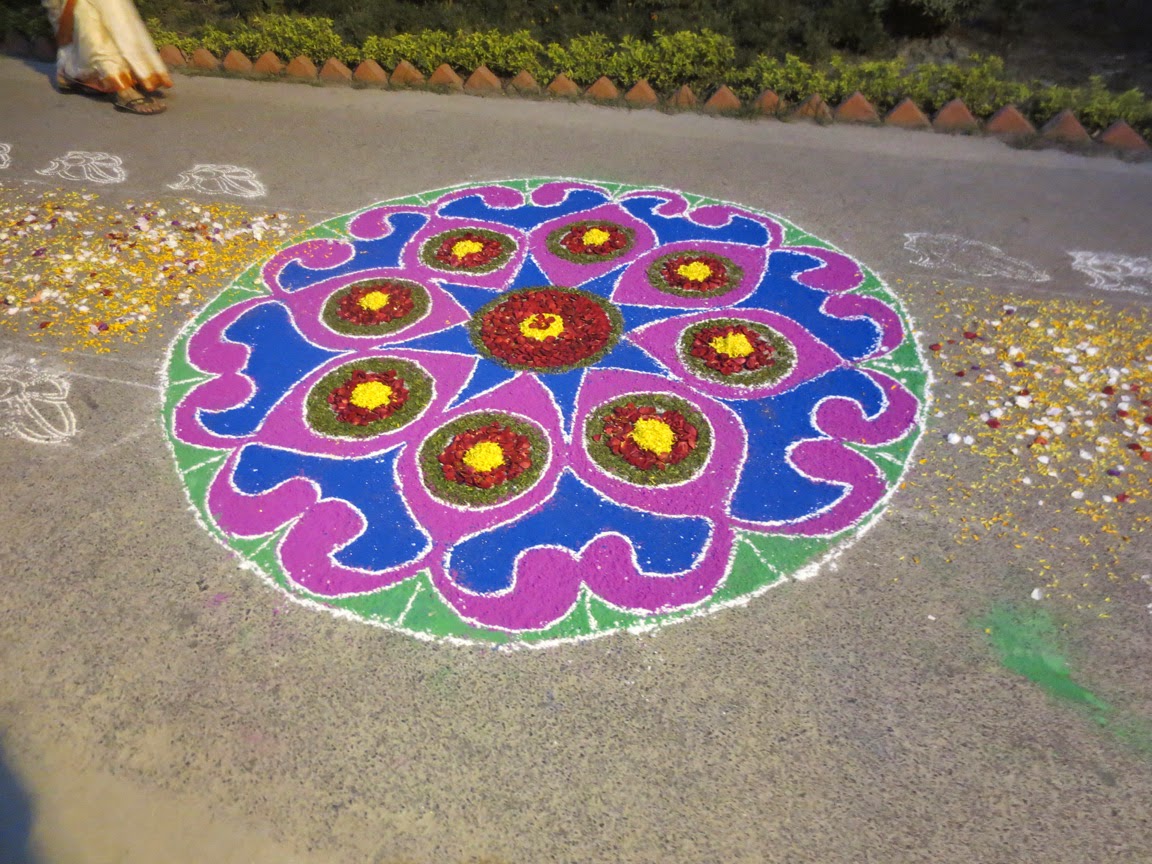
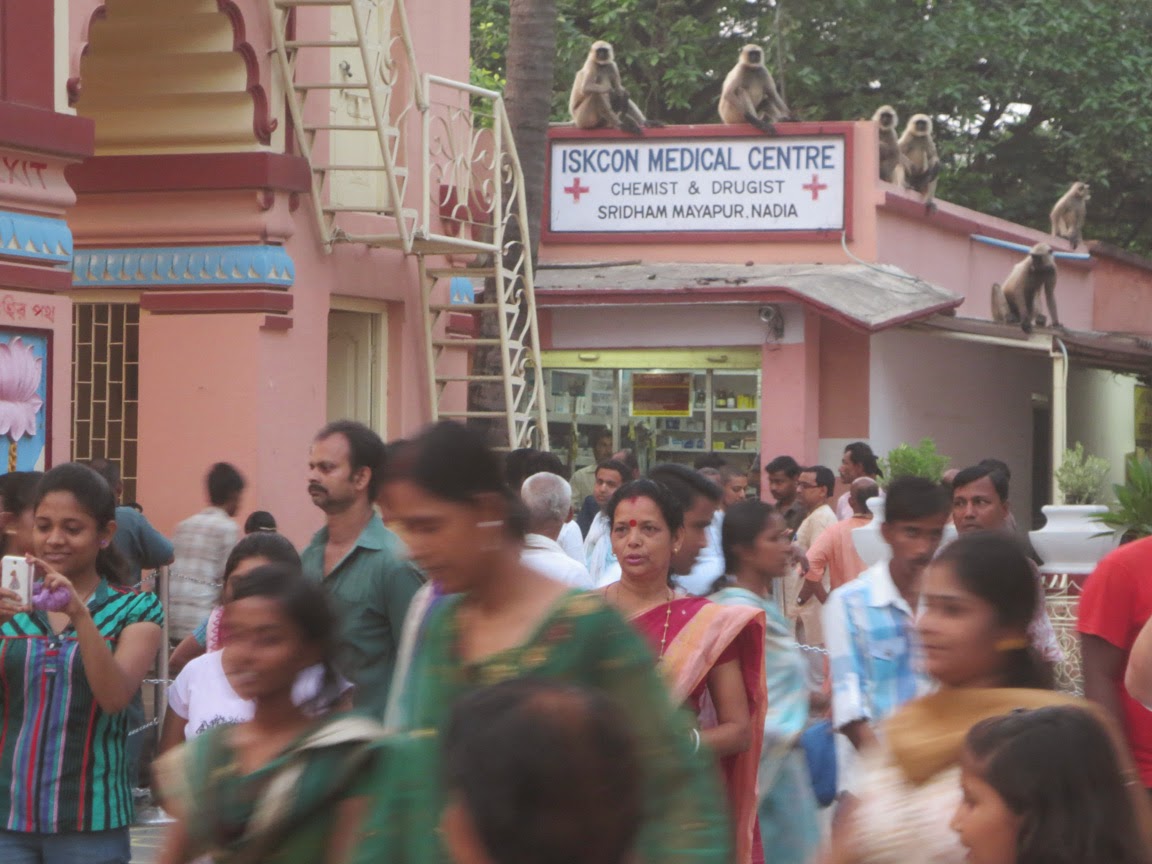




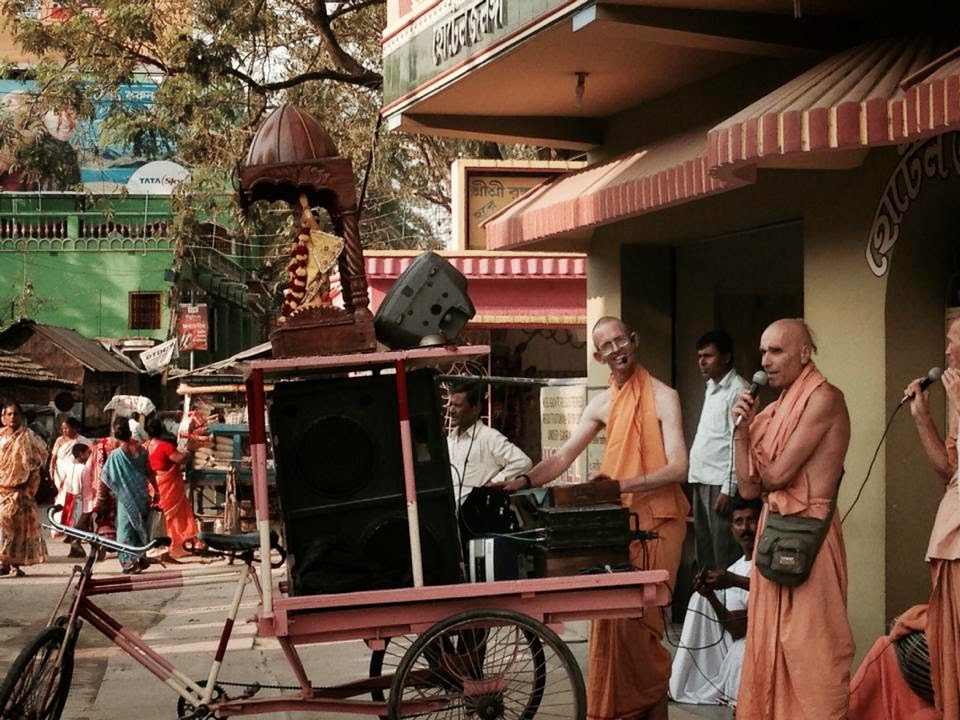
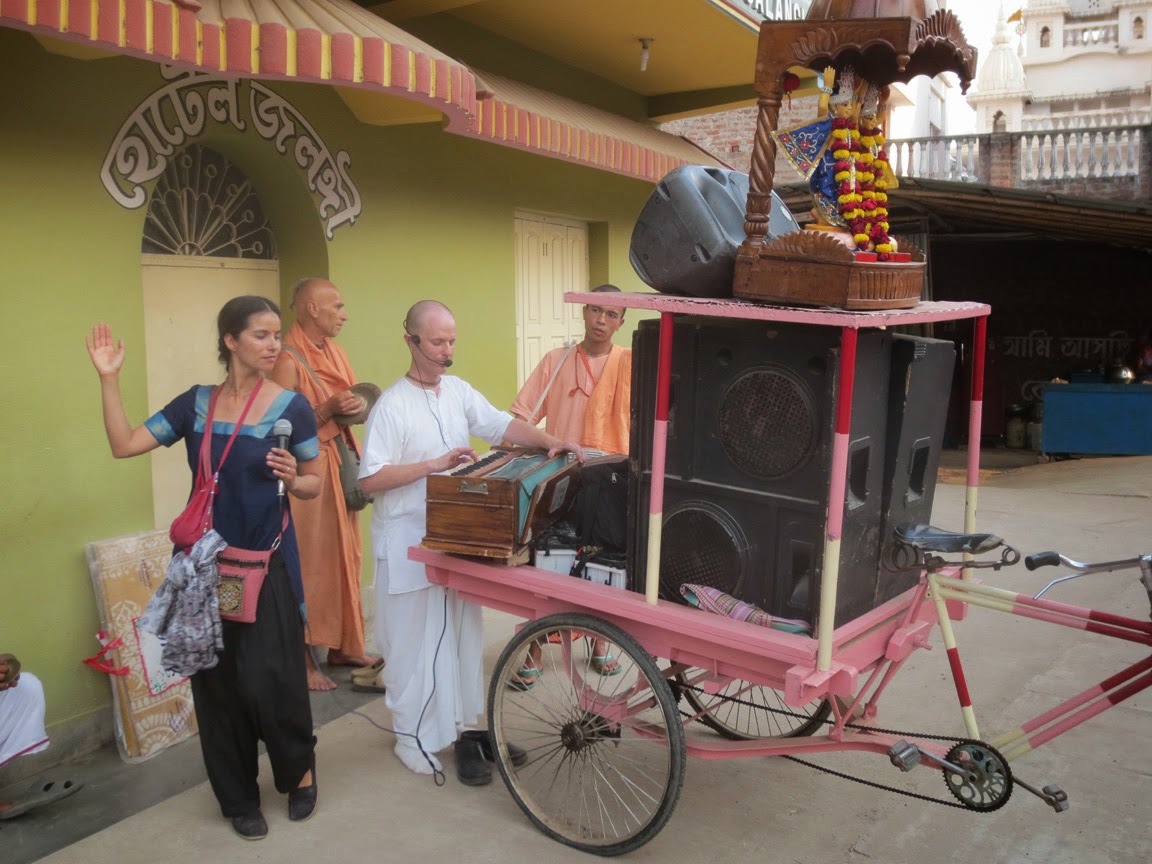
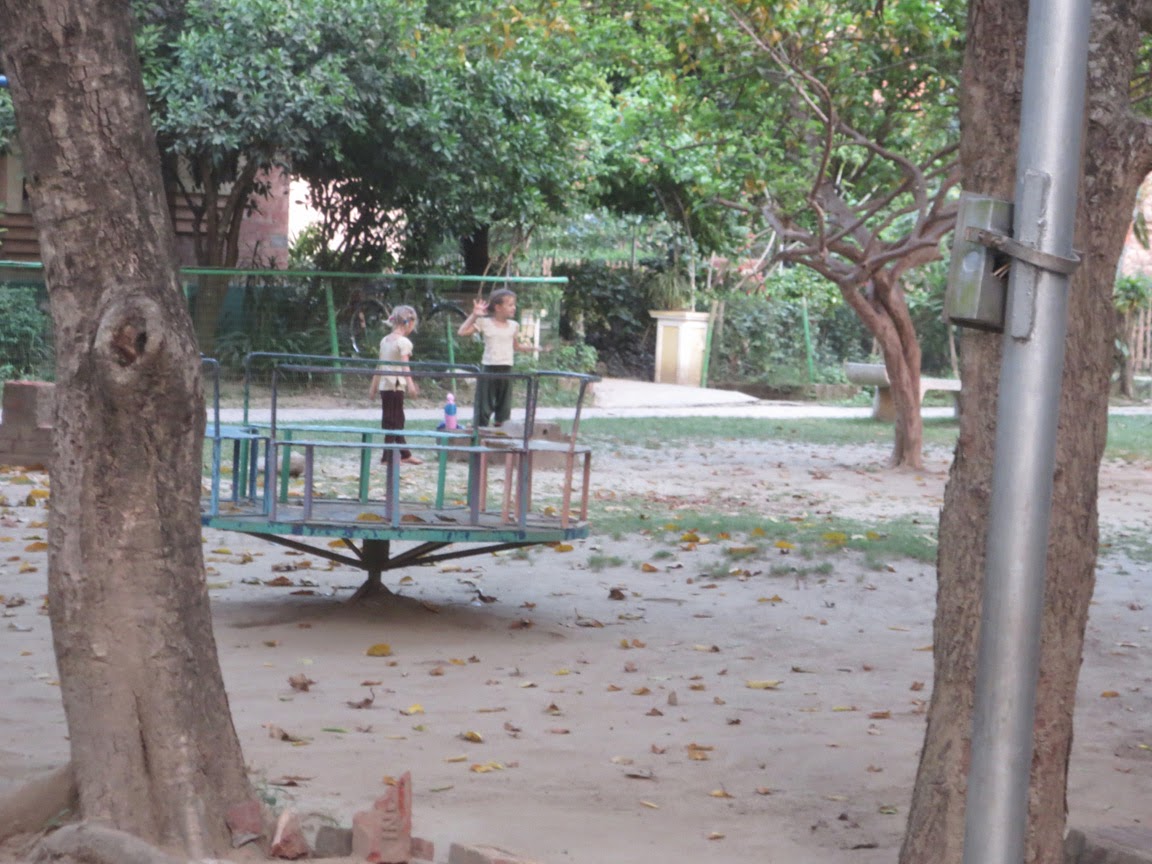






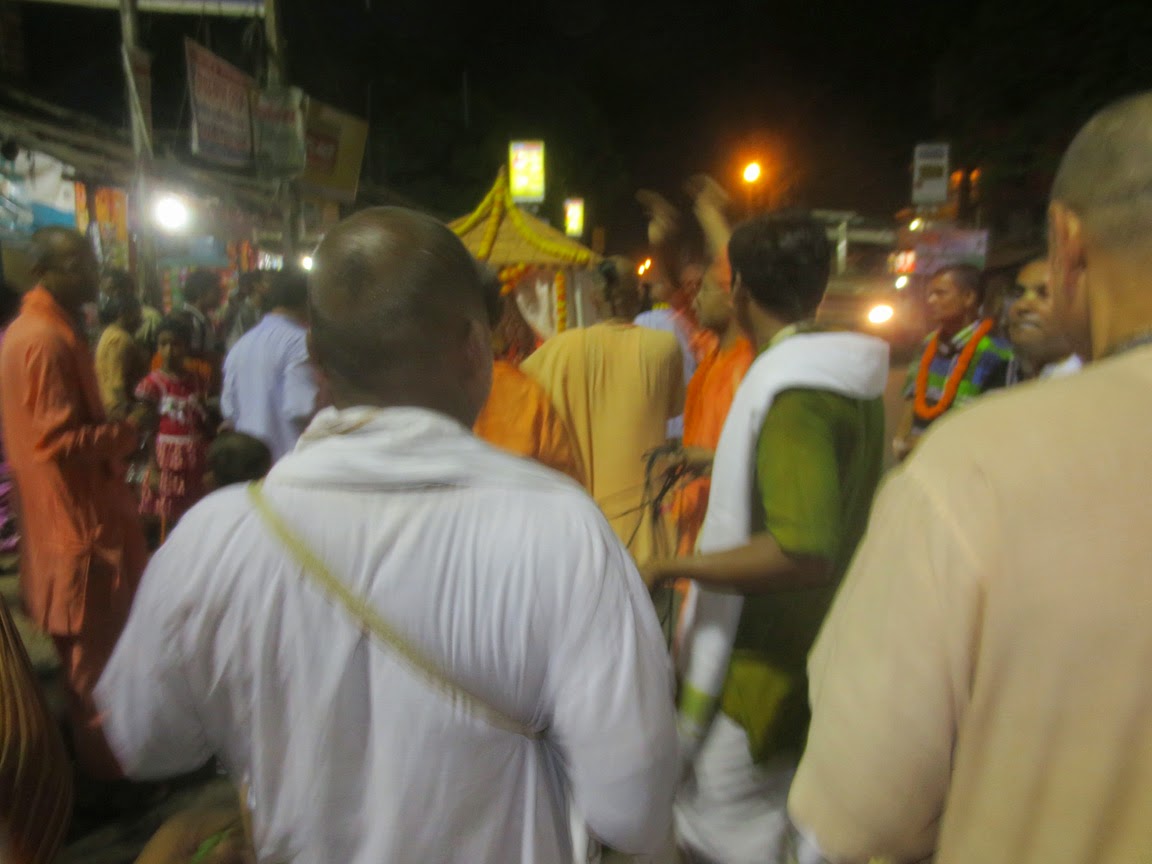


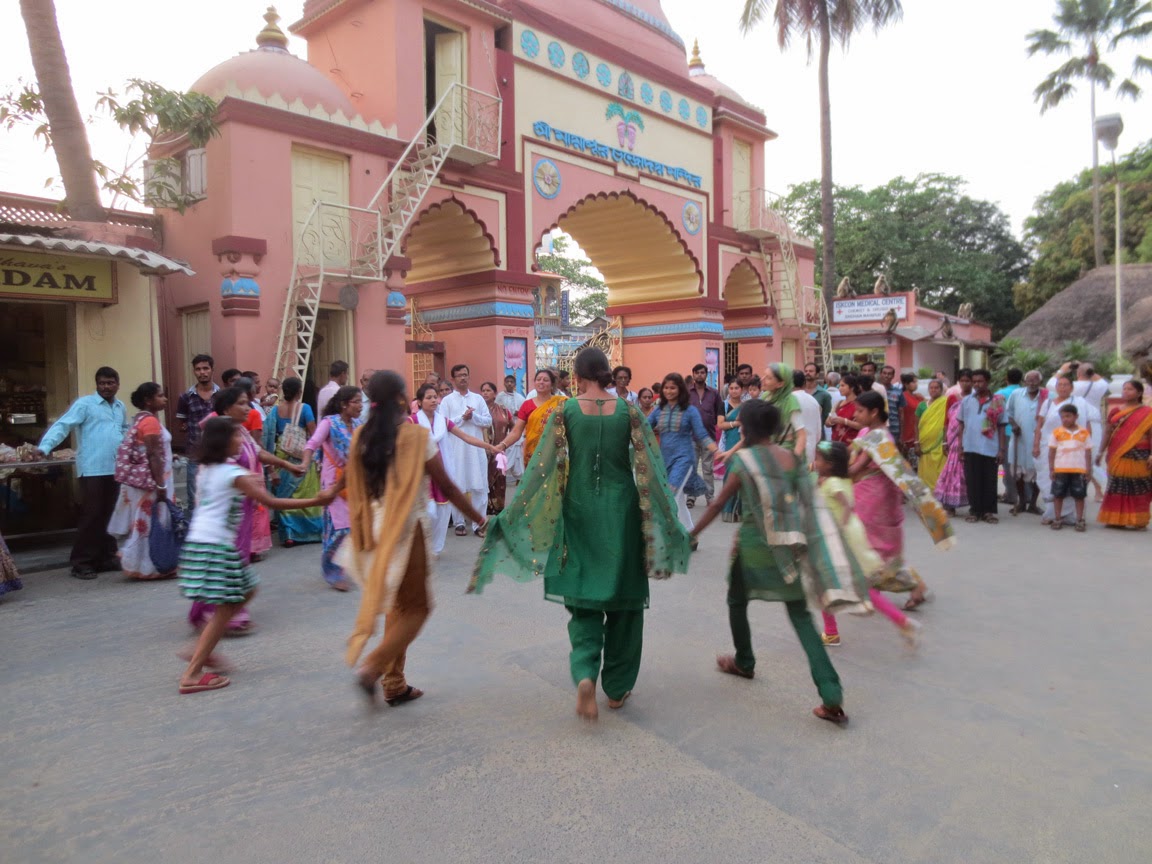
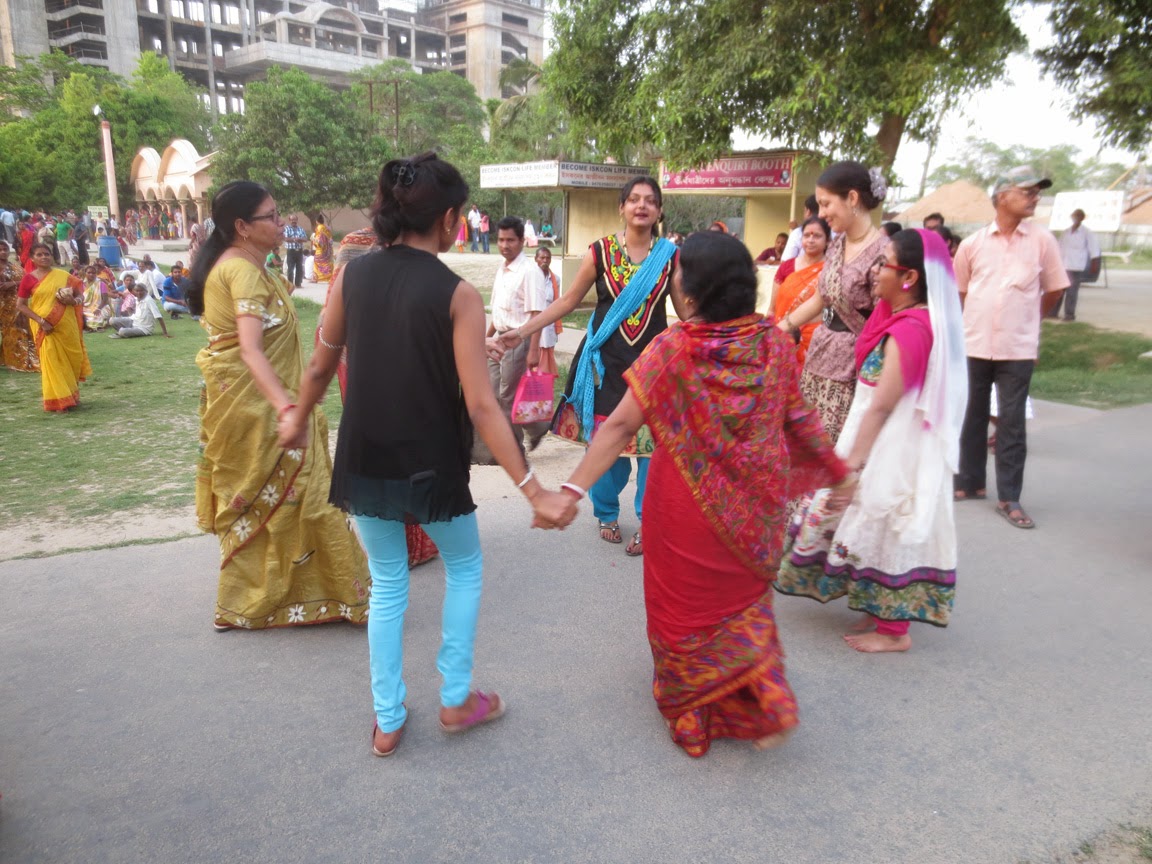

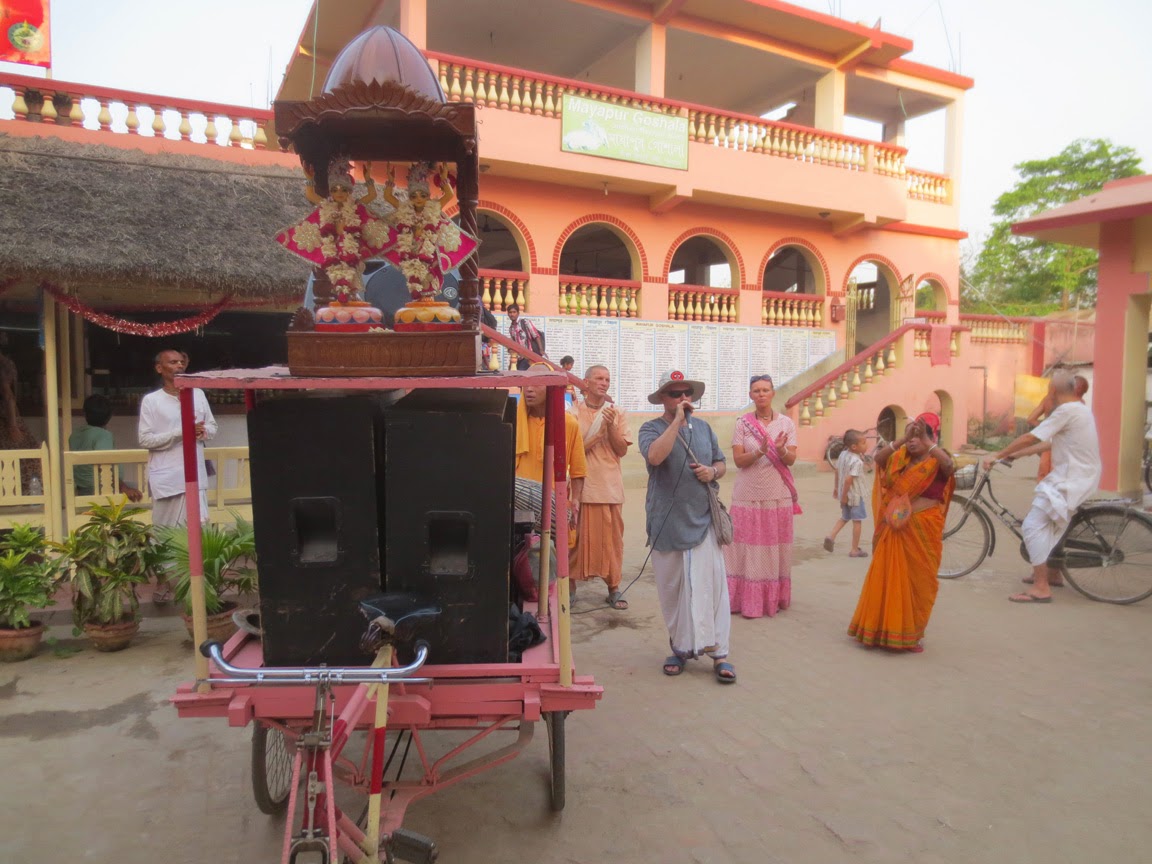






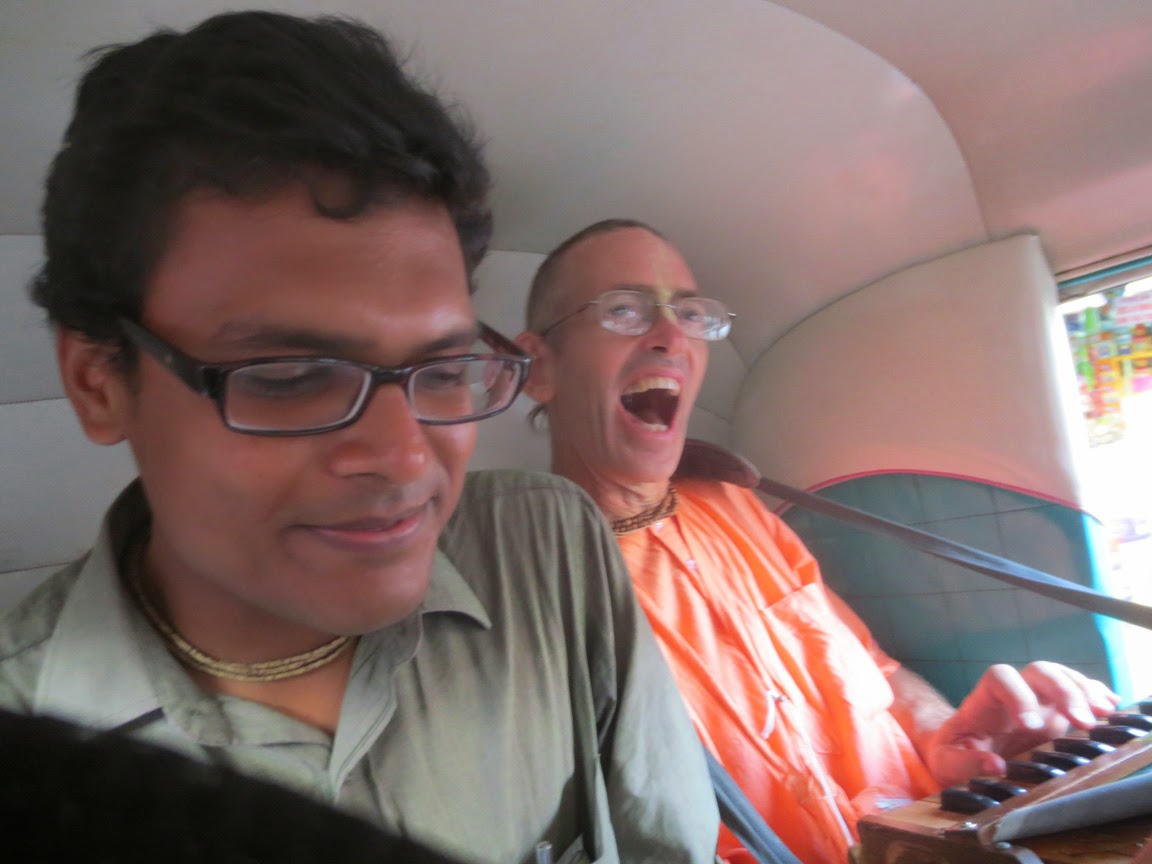






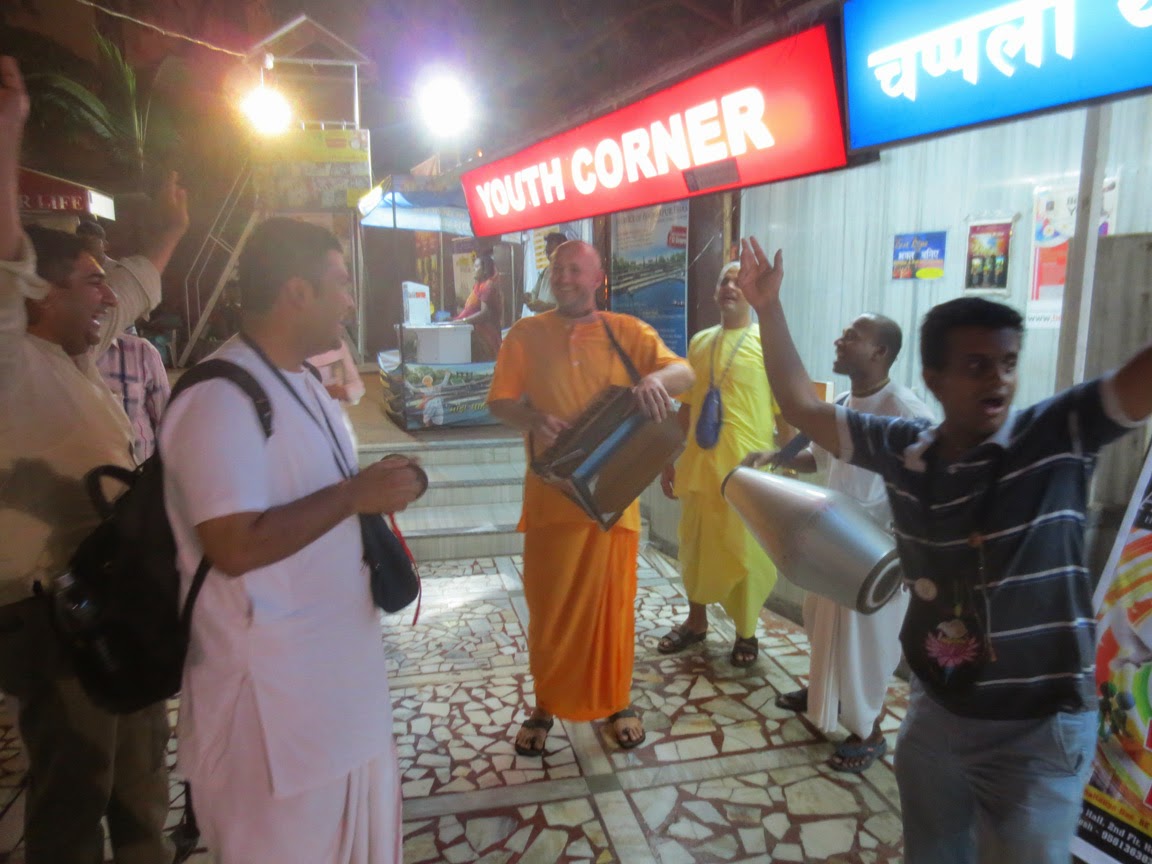






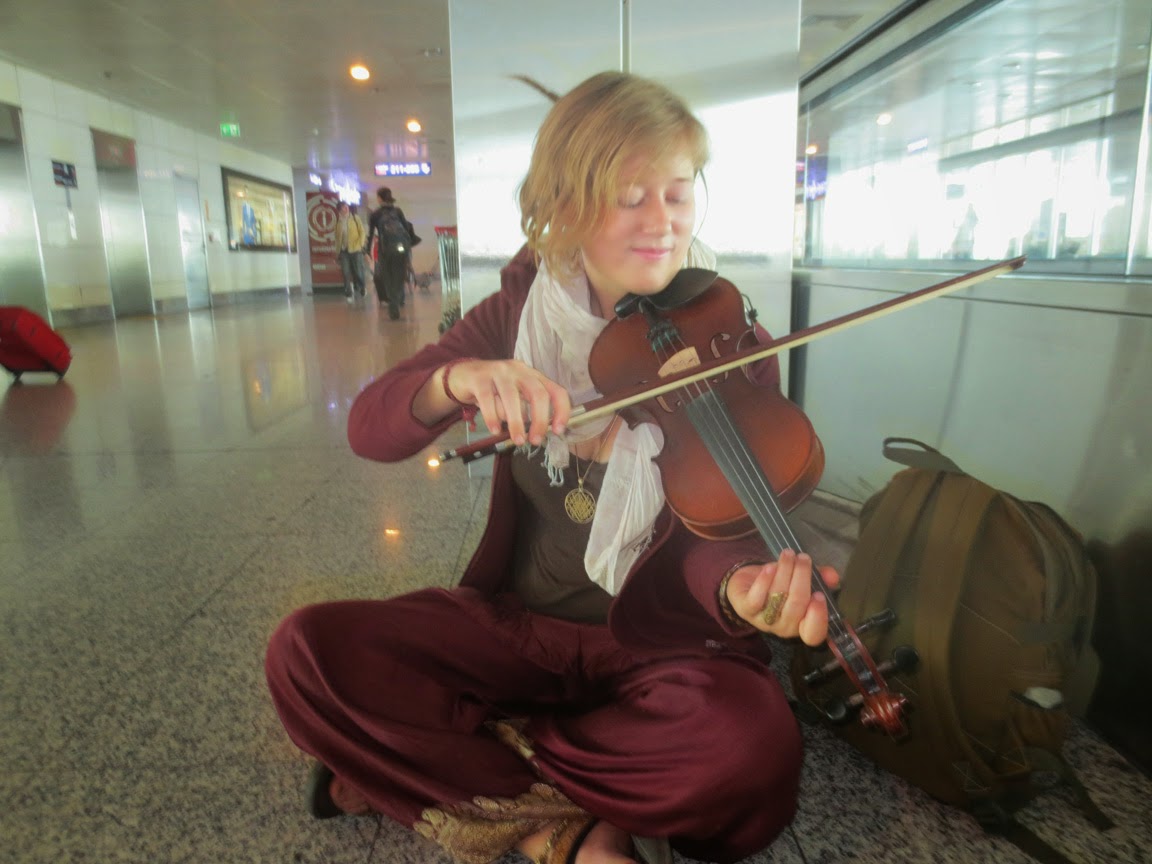

 ISKCON Brampton Monthly Sankirtan
ISKCON Brampton Monthly Sankirtan Fasting………………… on
Fasting………………… on  Appearance of Lord Nrsimhadeva
Appearance of Lord Nrsimhadeva Sponsor Kalash
Sponsor Kalash

 Photos from Jagannath Ratha Yatra 1st Time ever in Dhulikhel & Banepa. Stage Program at Dhulikhel on 23rd April and Jagannath RathaYatra at Banepa, Kavre, Nepal on 24th April 2014.. With His Holiness Mahavishnu Swami, HG Patri Prabhu, and 1500+ Devotees for the Festival of Chariot.
Photos from Jagannath Ratha Yatra 1st Time ever in Dhulikhel & Banepa. Stage Program at Dhulikhel on 23rd April and Jagannath RathaYatra at Banepa, Kavre, Nepal on 24th April 2014.. With His Holiness Mahavishnu Swami, HG Patri Prabhu, and 1500+ Devotees for the Festival of Chariot.  Dallas Morning News,
Dallas Morning News,

 HH Giriraj Swami’s wonderful answer! Lord Krishna and His energies exist eternally, simultaneoulsy, but because Krishna is primary and His energies are subordinate, we say that they come from Him. For example, we say that the sunshine comes from the sun, because the sunshine is secondary to the sun, but as long as the sun has existed, the sunshine has also existed.
HH Giriraj Swami’s wonderful answer! Lord Krishna and His energies exist eternally, simultaneoulsy, but because Krishna is primary and His energies are subordinate, we say that they come from Him. For example, we say that the sunshine comes from the sun, because the sunshine is secondary to the sun, but as long as the sun has existed, the sunshine has also existed.  One of the kids was asking if the lady close to Krishna is His girlfriend!
One of the kids was asking if the lady close to Krishna is His girlfriend!  Chanting and dancing!
Chanting and dancing!